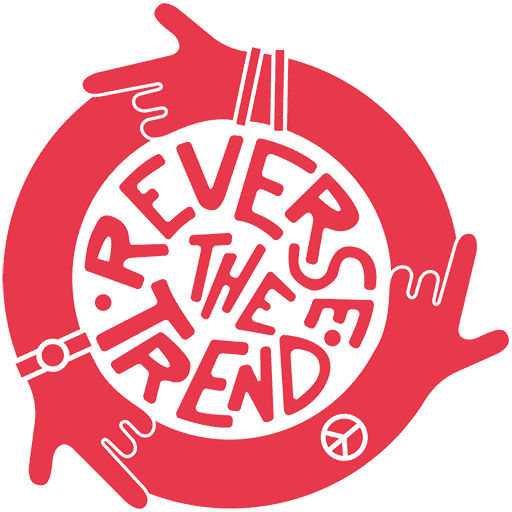Shades of Disarmament Film Festival
On Tuesday, July 24, Reverse the Trend and its partners convened a film festival at the Scandinavia House. We showed excerpts from three films, “The Vow from Hiroshima,” “On The Morning You Wake,” and “In Our Hands.” A trailer of “Shades of Disarmament,” an original film by Reverse The Trend, was also shown.
The first film presented, “The Vow From Hiroshima”, is a portrait of Setsuko Thurlow, a survivor who was only thirteen years old when the bomb was dropped. Her moving story is told through the lens of her growing friendship with a second-generation survivor, Mitchie Takeuchi. The second film presented, “In Our Hands”, is a comprehensive documentary featuring candid shots and interviews of those involved with the 1982 March and Rally for Nuclear Disarmament, in which over 1 million participants made their voices heard all throughout New York. Lastly, the trailer for “Shades of Disarmament”, after which the festival was named, was presented.
Throughout those screenings, an interactive VR experience titled “On The Morning You Wake”, was presented outside of the theater. This interactive VR experience allowed participants to experience the 38 minutes the people of Hawaii lived under the threat of nuclear attack as the result of a false alarm
Following the screenings, we convened a special panel discussion.
Sponsors:
Nuclear Age Peace Foundation, Reverse The Trend, The Prospect Hill Foundation, Lush Cosmetics, Peace Boat US, and Hibakusha Stories
Film Festival
Harris Agha Introduces the Festival
Christian N. Ciobanu provides his remarks
Video from the Event
Panel Discussion
Jeremiah Williams shares his thoughts about working on the Shades of Disarmament Film
Brendan Fay with Harris Agha and Chloe Fromigue
Seth Shelden of ICAN shares his perspectives
Dr. Ivana Hughes with a participant
Story behind the Film Festival
“Shades of Disarmament” is an original short documentary produced by Reverse the Trend and its supporters highlighting activists of color who were present at the 1982 Rally on Nuclear Disarmament. The film sheds light on the intersectional relationship between the struggles for environmental justice, social justice, and human rights. “Shades of Disarmament” focuses on the necessity of including diverse voices - many of whom were marginalized during the march and rally - in the disarmament movement.
At RTT, we use art and education as agents of change. This film embodies our mission.
J. Robert Oppenheimer at the Guest Lodge, Oak Ridge, in 1946, February 1946, Photographed by Ed Wescott, Image sourced from the DOE Digital Archive 2017659
Sajani Patel and Jim Anderson
Interviewing Leslie Cagan
Jeremiah Williams and Jim Anderson
Interviewing Dr. Vincent Intondi
INTERVIEWER
INTERVIEWER
Jeremiah Williams
Sajani Patel
Special acknowledgements to Jim Anderson, Leslie Cagan, and Vincent Intondi
CINEMATOGRAPHER
Julian Archer
CREATIVE CONSULTANT
Liam Broderick
Behind the Scenes
Group Picture of the Team with Jim Anderson
Group Photo with Dr. Vincent Intondi
“A nuclear war cannot be won and must never be fought”
—President Ronald Reagan in 1982 after the introduction of the Freeze resolution to Congress
J. Robert Oppenheimer at the Guest Lodge, Oak Ridge, in 1946, February 1946, Photographed by Ed Wescott, Image sourced from the DOE Digital Archive 2017659
Contextualization of the Film “Oppenheimer”
The story of J. Robert Oppenheimer and his colleagues from The Manhattan Project are cautionary tales of the perils of unfettered technological advances and an uninformed, disempowered public. Preceding the release of Christopher Nolan’s major motion picture about the lead scientists for The Manhattan Project, Reverse the Trend’s “Shades of Disarmament” Film Festival aims to show that mass mobilization and an informed public are essential to showing governments that human lives are not pawns to be sacrificed in war.
Following the Trinity Test and subsequent atomic bombings of Hiroshima and Nagasaki, Japan, governments the world over took advantage of the general public’s lack of awareness and education on the lethal consequences of producing, owning, and using nuclear weapons. Regarded as “a necessary evil” by those in power, today’s public has been reminded by the ongoing conflict in Ukraine how precarious nuclear weapons possession truly is. “Shades of Disarmament” Film Festival will now only reveal the reality of nuclear weapons that continues to be suppressed but also showcase actionable steps any person on Earth can do to help dismantle global nuclear stockpiles.
History of The 1982 Freeze Movement
Forty-one years ago, organizers called the June 12, 1982 demonstration, “the disarmament rally to end all disarmament rallies.” The purpose of the march was to show support for the United Nations Second Special Session on Disarmament, to call for a reduction of all nuclear weapons, and a transfer of military budgets to human needs. In the end, the June 12th demonstration became the largest rally in United States history with one million people demanding an end to the arms race. This historic event represents the height of the antinuclear movement, which was perhaps the most successful citizen led movement in U.S. history.
The diverse voices that were heard on June 12th, helped pave the way for a new movement in the twenty-first century, led primarily by women and younger activists who view eliminating racism, patriarchy, and nuclear weapons as part of the same fight in creating a more just and equal world. With the forty-first anniversary of the June 12th rally just behind us, the historic Treaty to Prohibit Nuclear Weapons entering into force on January 22, 2021, and the premiere of Christopher Nolan’s biopic Oppenheimer slated for the day after this film festival, it is important to look back at a time when citizens mobilized to halt the arms race, pushed leaders of the two biggest nuclear powers to act, and moved the world closer to peace.



















